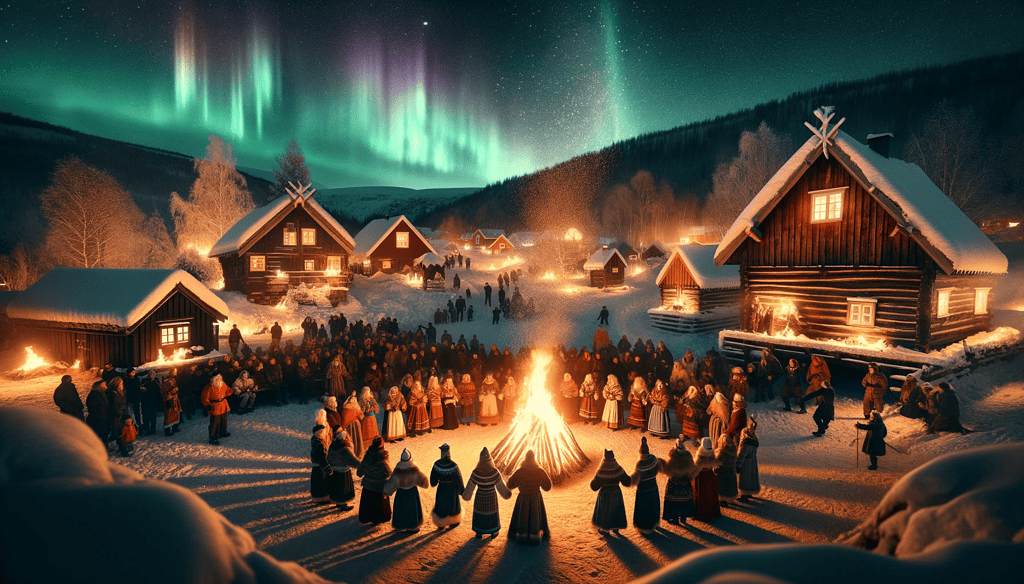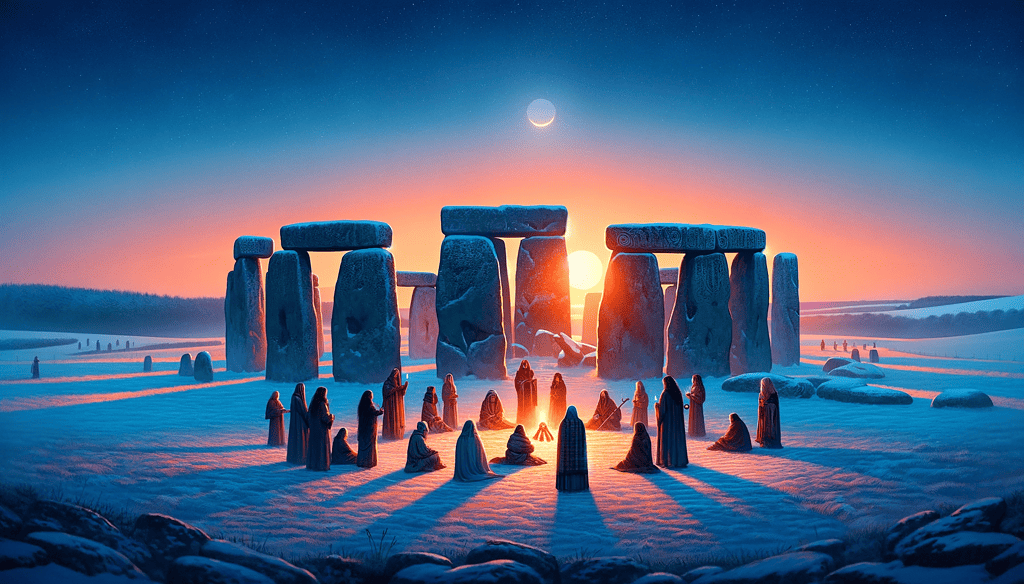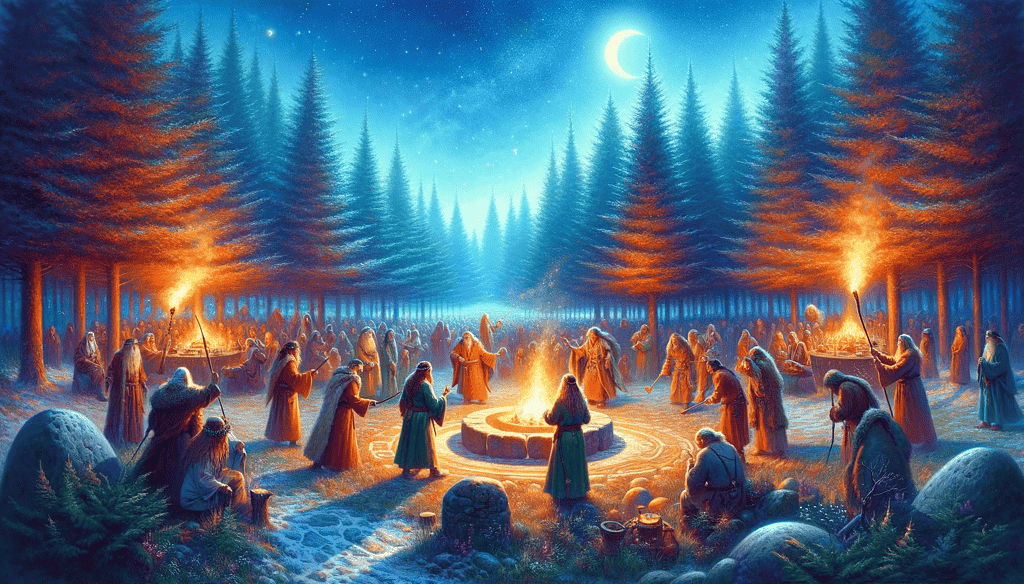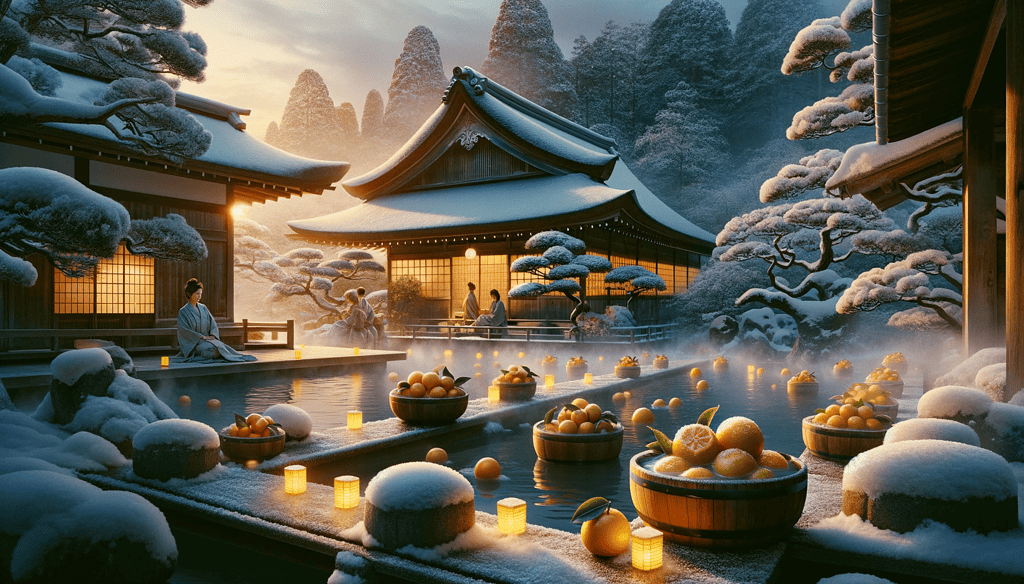
The Winter Solstice is the shortest day and the longest night of the year. It has been celebrated by human cultures for millennia. This celestial event, occurring on December 21 (or 22) in the Northern Hemisphere, is deeply rooted in human history, rich in tradition, and brimming with symbolism. From ancient rituals to modern festivities, winter solstice celebrations are a time for reflection, renewal, and celebration across various cultures.
Ancient civilizations around the world celebrated and revered the winter solstice. Its significance lies in the interplay between darkness and light, death and rebirth.
For agrarian societies, this period was crucial. It signaled the end of the harvest season and the beginning of a cold, barren winter. The Romans had Saturnalia; the Norse had Yule. From China to South America and from the Romans to the Vikings, people have traditions and celebrations around this winter solstice. So it’s not just the Christmas holidays — there are plenty of winter solstice celebrations in different cultures.
Winter solstice in different cultures
Despite the geographical and cultural diversity, there’s a striking similarity in how different societies celebrate the solstice. Light, whether it’s the fire’s warmth or from candles, is a central element. Light symbolizes hope and the return of brighter days. A feast is almost always in order. Wreaths, music, and dancing all play a role in winter solstice traditions.
But while these common themes exist across different cultures, the specific customs and rituals associated with the winter solstice vary greatly. From lighting bonfires and lanterns to sharing meals and exchanging gifts, each celebration carries its own unique blend of symbolism and significance.
The Norse Yule

The most famous pagan celebration is Yule. The Norse marked the winter solstice, the shortest day of the year, as the pivot point for the festival of Yule. This was the Midwinter Solstice, a time of hope, as the days would begin to lengthen again. Bonfires, storytelling, and revelry were all part of this celebration. This tradition is mirrored in the contemporary love of Christmas lights, caroling, and gathering with loved ones.
The Yule celebration was a time to honor the gods, ancestors, and spirits of the land. This spiritual reverence echoes in how we celebrate modern Christmas. The act of giving is not just about physical gifts but also about the sharing of spirit and goodwill. Wreaths, once a symbol of the cycle of the year and protection, now adorn doors as a welcome to this festive spirit.
The Yule folklore has found its way into many winter celebrations.
In Scandinavia, Yule or Jul traditions are deeply rooted in pre-Christian pagan customs. In Sweden, the Saint Lucia Day on December 13th marks the start of the Christmas season, blending Christian and Norse traditions. Young girls dressed in white gowns with red sashes and a crown of candles bring light in the darkness, symbolizing Saint Lucia bringing food during a famine.
The Roman Saturnalia
Saturnalia, an ancient Roman festival in honor of the god Saturn, held on December 17, would later expand into a week-long celebration leading up to the solstice. This time was marked by feasting, role reversals, gift-giving, and a carnival-like atmosphere. It heavily influenced many Christmas traditions observed today.
It’s probably safe to say that without the Saturnalia, we wouldn’t have Christmas today. When Christians wanted to gather more followers for their religion, they couldn’t just ask the local people to give up on their celebrations. So instead, they opted to incorporate festivals like Saturnalia.
By aligning the celebration of Jesus Christ’s birth with the timing of Saturnalia, they aimed to adopt and adapt familiar pagan festivities, making the transition to Christianity more seamless for converts. Over time, many of the Saturnalia customs merged with Christmas celebrations. This process is called syncretism and it lead to the eventual transformation of Saturnalia’s traditions into part of the Christian holiday of Christmas. This adaptation was strategic, blending religious and cultural practices to ease the cultural shift from paganism to Christianity.
Winter solstice around Stonehenge

In the United Kingdom, the Winter Solstice is celebrated with a blend of ancient and modern traditions. Stonehenge, the prehistoric monument in England, plays a central role during this time. The stones align with the sunset on the solstice, attracting thousands of visitors, including druids and pagans, who gather to witness this spectacular alignment and celebrate the rebirth of the sun.
We’re not entirely sure how these ancient people celebrated the winter solstice, as they went through so much trouble to create a calendar for the solstice, it’s safe to say it must have been a big celebration
“The clear solstitial alignment of Stonehenge has prompted people to suggest that the site included some kind of calendar since the antiquarian William Stukeley,” said Professor Darvill, from Bournemouth University, “Now, discoveries brought the issue into sharper focus and indicate the site was a calendar based on a tropical solar year of 365.25 days.”
Peru’s Inti Raymi: Honoring the Sun
In South America, the Inca tradition of Inti Raymi, although officially celebrated during the June solstice in the Southern Hemisphere, shares a similar spirit with winter solstice celebrations in the north. This ancient festival, which honors Inti, the sun god, was revived in Peru in the 20th century. It includes colorful processions, traditional music, and theatrical performances, connecting contemporary Peruvians with their rich cultural heritage.
Of course, this happens on a different date. With Peru being in the Southern Hemisphere, their winter solstice almost coincides with the summer solstice in the Northern Hemisphere. The Inti Raymi (Quechua for “Inti festival”) is celebrated on June 24.
Celebrations involve music, a feast, and gatherings of families. In some areas, this has been incorporated into Christian celebrations.
Druid celebrations of winter solstice

The Druids, a class of ancient Celtic priests, are often associated with the celebration of the Winter Solstice. They honored the Sun and the Sky. In fact, for the druids, the Winter Solstice, the shortest day of the year, marked the point of death and rebirth of the sun. For the Druids, this period was a time of death and rebirth in nature. It mirrored the cycle of life, death, and rebirth that was central to their beliefs. They would light fires to support the Sun and keep it going through the cold times of winter.
Like many ancient solstice celebrations, this time would have also been marked by communal feasting and merrymaking, perhaps with singing, dancing, and storytelling.
China’s Harmony of Dongzhi
In China, the Winter Solstice, or Dongzhi, is a time for family reunions and feasting. The traditional meal includes tangyuan, sweet rice balls that symbolize unity and prosperity. Dongzhi, part of the Chinese lunar calendar, emphasizes balance and harmony, reflecting the ancient Chinese philosophy of yin and yang. It’s a time to celebrate the gradual increase of yang (light and warmth) as the days start getting longer.
This celebration focuses on invigorating tonic foods. During Dongzhi, you should limit physical activities and you should eat well to nourish your body. It’s a way of being in touch with nature — like animals that hibernate during winter and slow down their metabolic rate.
Japan’s Toji and the Rejuvenating Baths

Japan celebrated Toji, the Winter Solstice, with customs that focus on health and rejuvenation. One popular tradition is taking a yuzu bath, where hot baths are infused with yuzu citrus fruits. Believed to ward off colds and revitalize the body, this aromatic bath is a soothing ritual that combines relaxation with a celebration of nature’s gifts.
Symbolism and Significance of the Winter Solstice
The solstice is more than just a celestial occurrence; in many cultures around the world, it symbolizes the eternal cycle of nature. It’s a reminder of the balance between light and dark, life and death, and the constant flux of the seasons. This period encourages introspection, the letting go of past burdens, and the anticipation of new beginnings.
Food plays a central role in solstice celebrations, featuring dishes that are hearty, rich, and symbolic. In many cultures, foods that are round and golden like the sun, such as oranges and gold-colored breads, are favored. Spiced wine and cider, representing warmth and prosperity, are common beverages.
Community events and festivals are common during the solstice, fostering a sense of togetherness and communal joy.
Modern global celebrations
In today’s interconnected world, the Winter Solstice is not just a day of cultural or historical significance; it’s a global event that transcends borders. Christmas is by far the most popular solstice celebration, but it’s not the only one. From Christians to atheists and modern Wiccans, people from all walks of life take this time to pause, reflect, and connect with others. Whether it’s through attending a solstice festival, participating in a community event, or simply lighting a candle at home, the day offers a chance to step back from the hustle and bustle of everyday life.
There’s also a modern twist to it.
With the advent of digital media, the solstice has found new expressions. Online communities organize virtual events, live-stream solstice sunrises, and share cultural stories, making these age-old traditions accessible to a wider audience. Social media platforms buzz with solstice greetings, photos, and reflections, illustrating the unifying power of this ancient celebration.
But regardless of whether you’re posting online, lighting bonfires, or simply enjoying quality time with your loved ones, you’re already involved in winter solstice folklore. So make the most out of this time and enjoy the celebration!


